In the world of interior design, blending the charm of vintage pieces with the sleekness of modern homes is not just a trend—it’s an art form that transforms living spaces into reflections of personal style. For both beginners tiptoeing into the design realm and seasoned decorators seeking fresh inspiration, the timeless allure of vintage decor offers a wealth of possibilities that can elevate any modern home. This article invites you to explore the captivating world where past meets present, guiding you to seamlessly integrate vintage elements into contemporary settings.
Vintage decor is so much more than a nostalgic nod to the past; it’s a way to infuse your home with character, history, and a unique story. By incorporating vintage pieces, you create a dynamic interplay between old and new, adding depth and intrigue to your modern spaces. Here, we’ll delve into twelve imaginative ways to bring vintage style into your home, offering practical advice and inspiration for every room. Whether you’re drawn to mid-century modern lines or the rustic charm of antique finds, there’s a vintage element waiting to enhance your home’s aesthetic.
As we journey through these creative ideas, you’ll discover how to balance the coziness of vintage with the clean lines of modern design. We’ll highlight the importance of selecting pieces that resonate with you personally, ensuring that your home feels as unique as you are. This exploration will arm you with the knowledge and confidence to mix eras and styles like a pro, creating a harmonious home that tells your story beautifully. So, let’s embark on this exciting adventure of transforming your living spaces with vintage flair and modern sensibility.
Incorporating Retro Lighting Fixtures
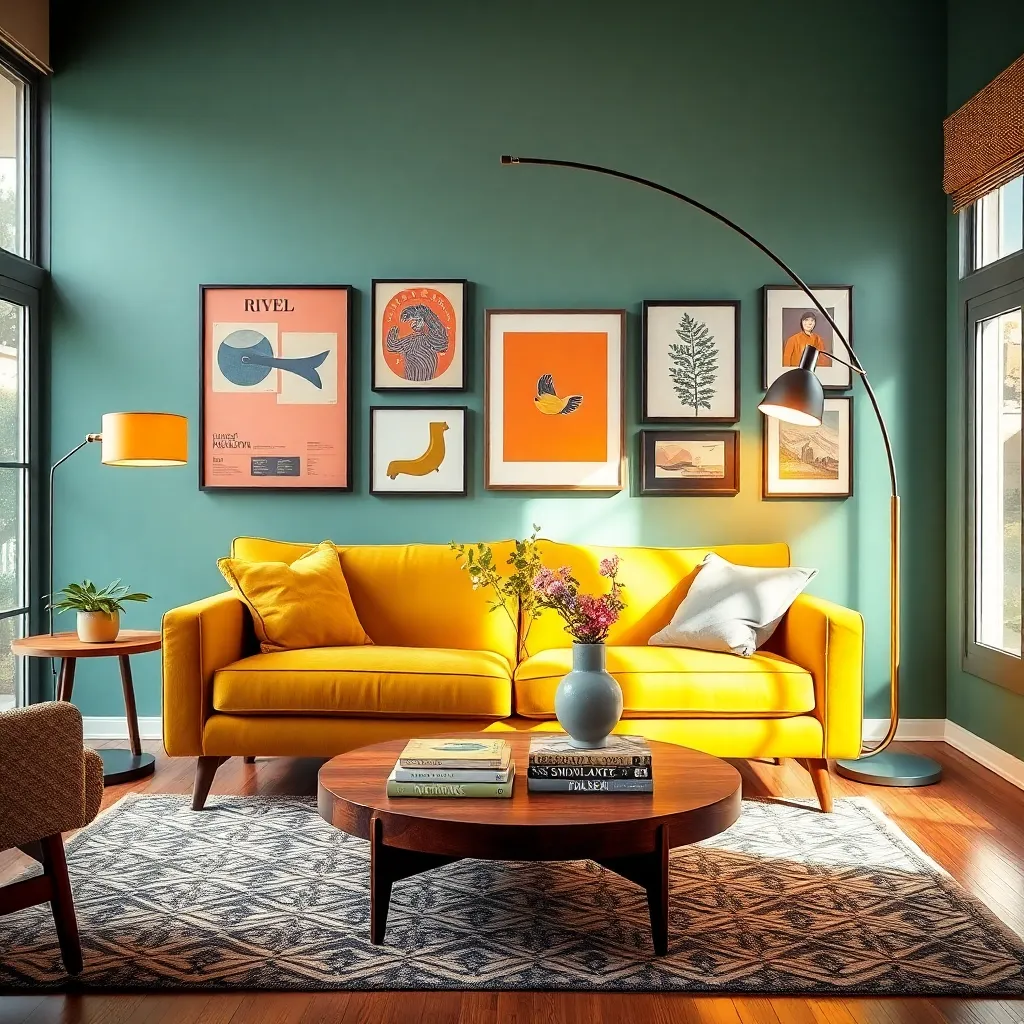
Retro lighting fixtures can dramatically transform a modern home by adding a unique charm and warmth. Consider statement pieces like a mid-century chandelier or vintage sconces to create a focal point in your living space.
To integrate these fixtures seamlessly, blend them with your existing decor by matching the metal finishes with other elements in the room, such as hardware or furniture legs. This approach ensures a cohesive look while still allowing the retro light fixtures to stand out as a feature piece.
When selecting retro lighting, pay attention to the scale and proportion of the fixture relative to your space. A large pendant light might overwhelm a small room, but it can add drama and interest in a larger, open-plan area.
For those seeking a more advanced touch, experiment with layering light sources to enhance both functionality and ambiance. Pair a vintage floor lamp with a modern table lamp for a balanced and well-lit room, utilizing different light temperatures to add depth and dimension.
Choosing Vintage-Inspired Wallpaper
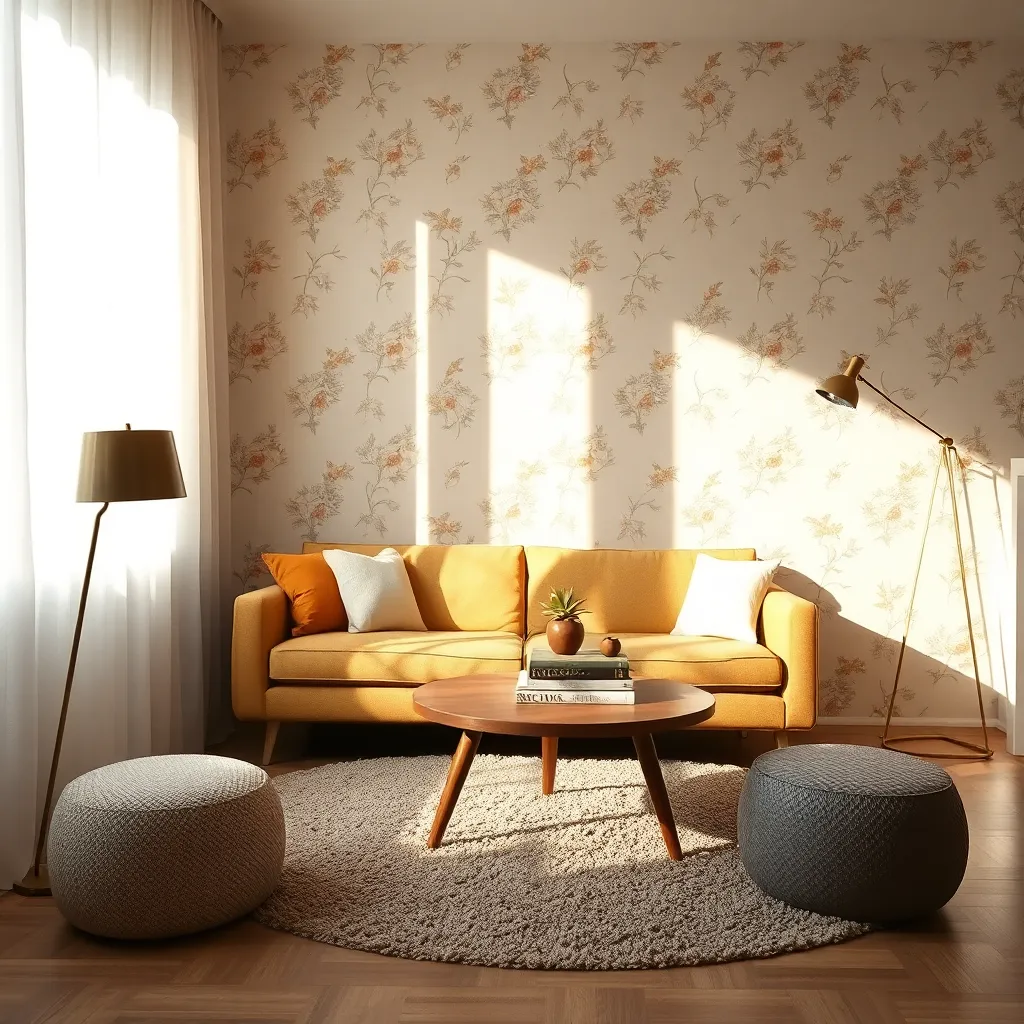
Embracing vintage-inspired wallpaper can dramatically transform a room, adding both character and warmth. Start by selecting a wallpaper with a pattern that resonates with the era you’re drawn to, like the delicate florals of the 1940s or bold geometrics from the 1970s.
Consider the scale of the pattern in relation to the room’s size; large patterns can make a small room feel cozy, while smaller patterns work best in larger spaces. For a cohesive look, choose colors from the wallpaper to match or complement your existing furniture and accessories.
To add depth and texture without overwhelming the space, use vintage-inspired wallpaper on an accent wall rather than covering all four walls. This technique highlights the wall without competing with other design elements like furniture or artwork.
Advanced decorators might layer patterns by pairing wallpaper with complementary vintage textiles, such as curtains or upholstery, to create a richly layered aesthetic. Ensure balance by keeping other decor elements simple, allowing the wallpaper to be the focal point of the room.
Mixing Antique and Modern Furniture
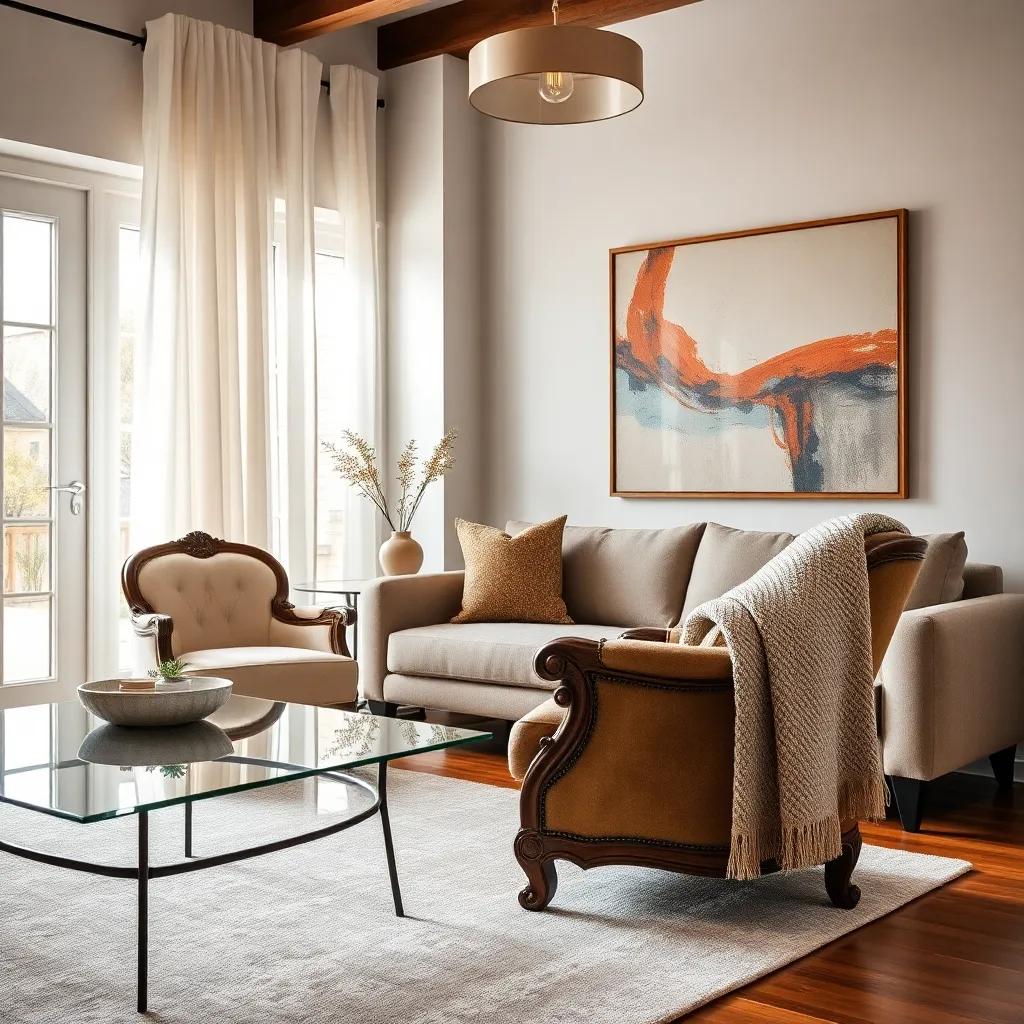
Incorporating both antique and modern furniture can create a visually stunning and eclectic living space. Begin by selecting a few standout antique pieces, such as a vintage armchair or an ornate wooden table, and pair them with sleek, modern elements for contrast.
Consider the color palette to ensure cohesion between the different styles. Neutral tones like beige, grey, and white can serve as a perfect backdrop, allowing both antique and modern pieces to stand out without clashing.
Placement is key when mixing these styles to maintain a balanced look. Avoid clutter by spacing out your key pieces, using items like a minimalist sofa to complement an intricate Victorian mirror, creating a harmonious blend of old and new.
For a more advanced approach, experiment with textures to add depth to your room. Pair a vintage velvet chair with a modern glass coffee table, or a sleek metal lamp with a rustic wooden desk, to play with contrasts and textures effectively.
Reviving Mid-Century Modern Flair
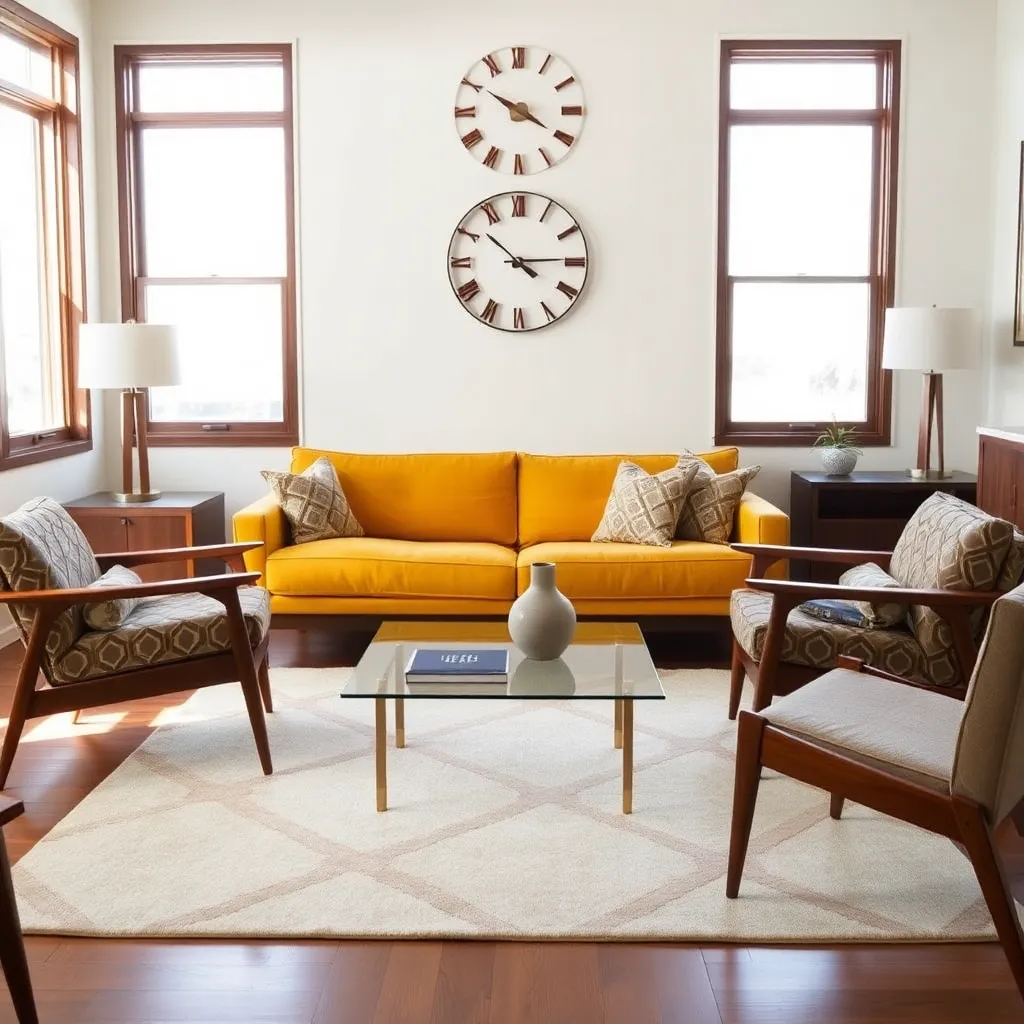
Infuse your space with mid-century modern flair by choosing furniture pieces that combine sleek lines with organic shapes. Opt for items such as an Eames lounge chair or a teak sideboard, which embody the era’s iconic design ethos.
Strategically place your mid-century pieces to create a cohesive look that feels both vintage and fresh. Consider pairing a low-profile sofa with a minimalist coffee table to maintain the clean lines characteristic of this style.
Color choices play a crucial role in achieving a mid-century look, so embrace warm, earthy tones like mustard yellow, olive green, or burnt orange. These hues can be incorporated through accent walls, upholstery, or decorative pillows to seamlessly blend with your modern elements.
For those looking to elevate their mid-century modern game, experiment with bold geometric patterns that were popular in the 1950s and 60s. Use these patterns in your rugs, curtains, or wallpaper to add depth and interest without overwhelming the space.
Utilizing Vintage Rugs Creatively
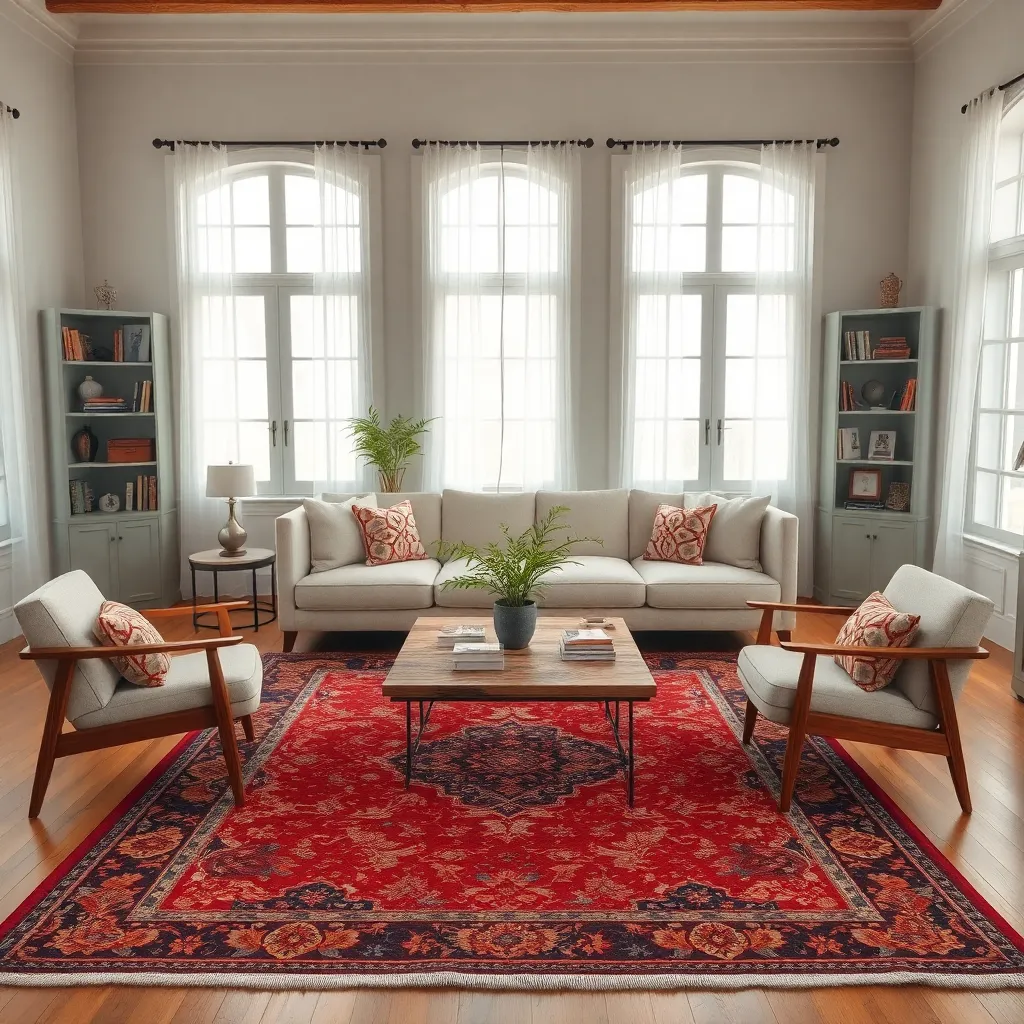
Incorporating vintage rugs into your modern home can add a unique layer of texture and history. Consider placing a vintage Persian rug under a sleek, minimalistic dining table to create a stunning contrast that highlights the artistry of the rug.
When selecting a vintage rug, pay attention to its color palette and patterns to ensure it complements existing decor. Mixing bold patterns with neutral furniture can create a balanced and inviting space, making the rug a focal point in the room.
For those with open floor plans, use vintage rugs to define different zones within a larger space. A vibrant rug can anchor a seating area, while a more subdued design can subtly enhance a reading nook or home office.
Experiment with layering rugs to add depth and visual interest; a smaller vintage rug atop a larger natural fiber rug can create a cozy, curated look. Play with different textures by pairing a plush vintage wool rug with sleek leather furniture or metallic accents.
Displaying Nostalgic Wall Art
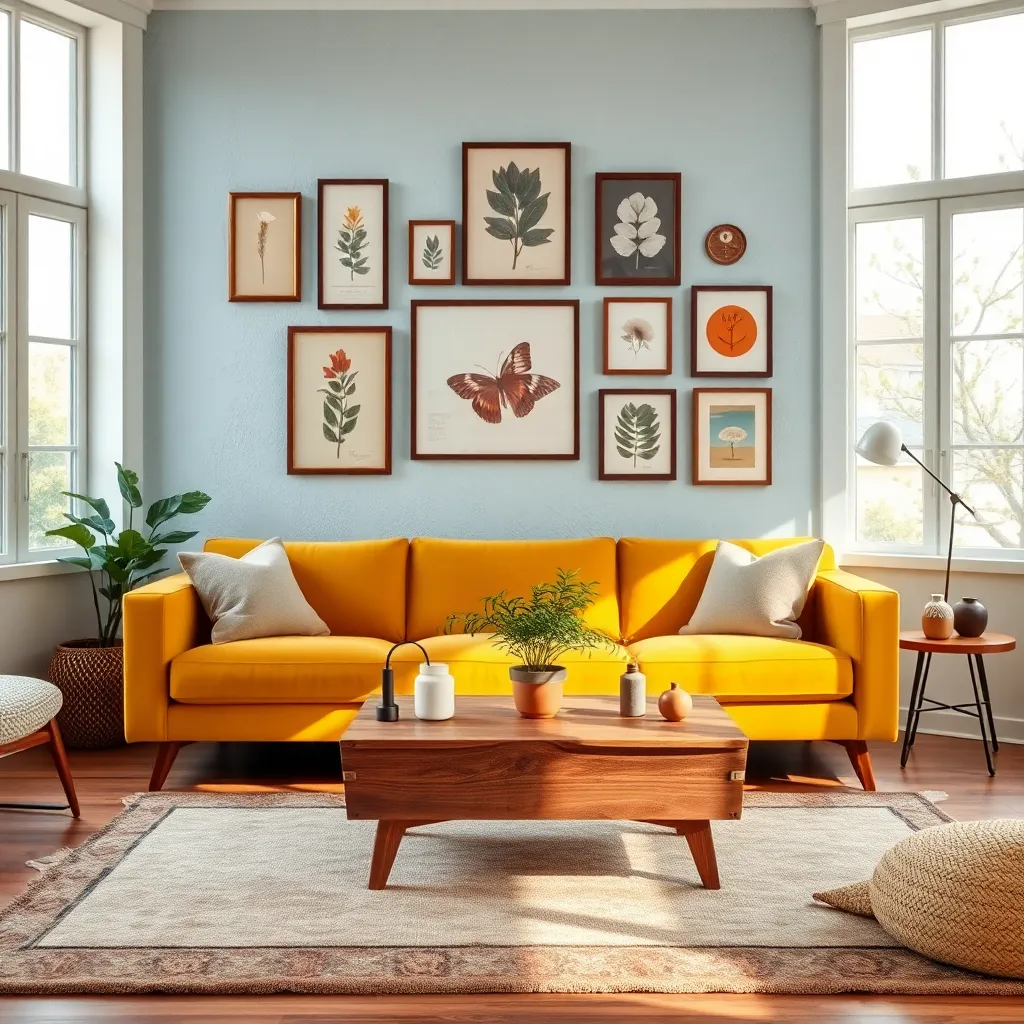
Displaying nostalgic wall art can bring a personal touch to your modern home, bridging the gap between past and present. To start, select art pieces that resonate with your personal history or interests, such as vintage travel posters, retro movie prints, or family photos from decades past.
Consider the placement of your nostalgic wall art carefully to maximize its impact. A gallery wall in a living room or hallway can create a striking focal point, while a single statement piece above a mantle or sofa can add character to the space.
For a cohesive look, choose frames that complement your existing decor. Black or white frames can provide a modern contrast to vintage art, while ornate or distressed frames enhance the nostalgic feel. Mixing frame styles is an option for a more eclectic look but ensure there is a common element, like color or material, to maintain harmony.
Beginners should start with a small collection to avoid overwhelming the space, gradually adding pieces as they find ones that truly speak to them. Advanced decorators might experiment with color blocking by painting walls in hues that accentuate the tones of the artwork, creating a more integrated and dynamic display.
Accessorizing with Vintage Finds
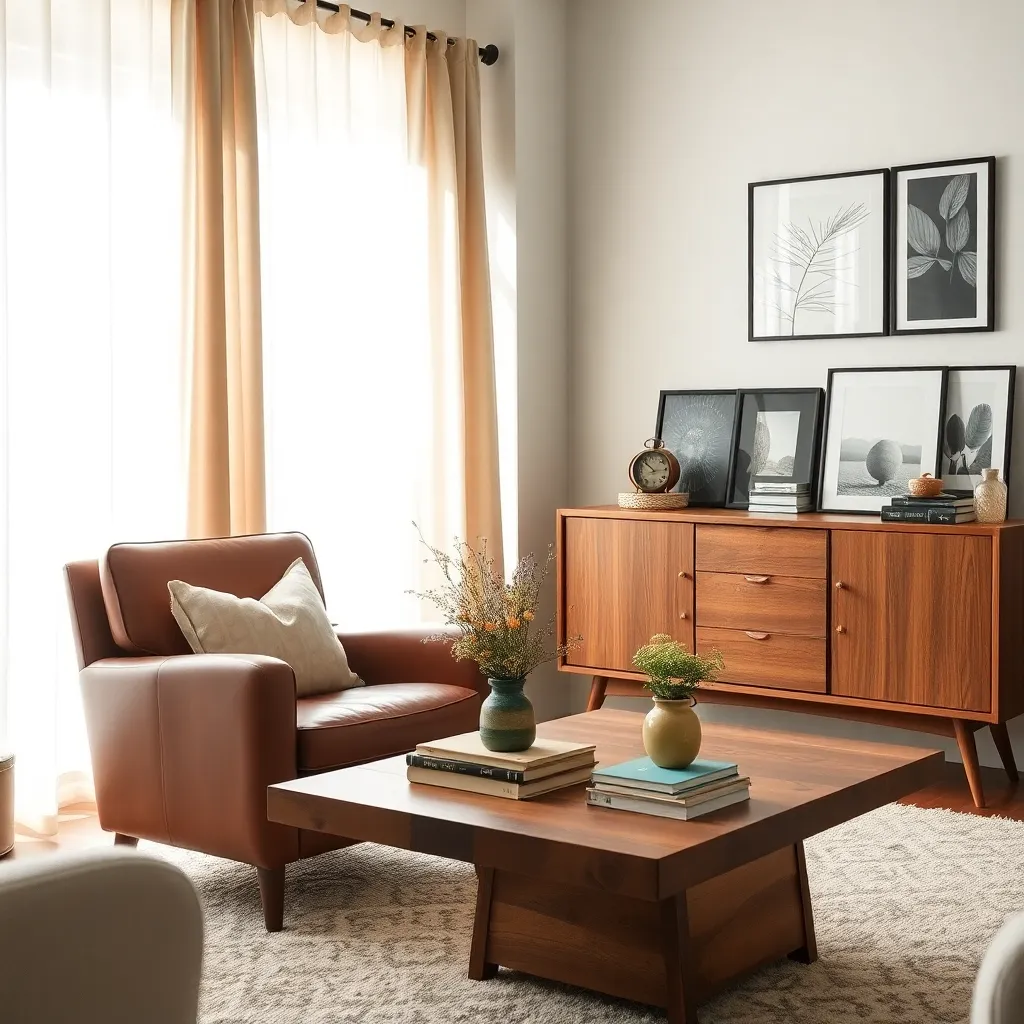
Transforming your space with vintage accessories can add a unique charm that modern pieces sometimes lack. Start by selecting vintage lamps or vases that can serve as both functional items and decor statements.
Consider incorporating vintage mirrors to create a sense of depth and light in smaller rooms. These mirrors not only bring in an element of history but also reflect natural light, making spaces feel larger and more inviting.
For those new to vintage decor, begin with small items like antique picture frames or retro clocks. These can easily be integrated into any room and offer a subtle introduction to vintage styling without overwhelming the space.
Advanced decorators can experiment with mixing vintage textiles, such as rugs or throw blankets, with contemporary furniture. This blend of old and new can create a layered look, adding texture and warmth to your home while maintaining a modern aesthetic.
Curating a Vintage Gallery Wall
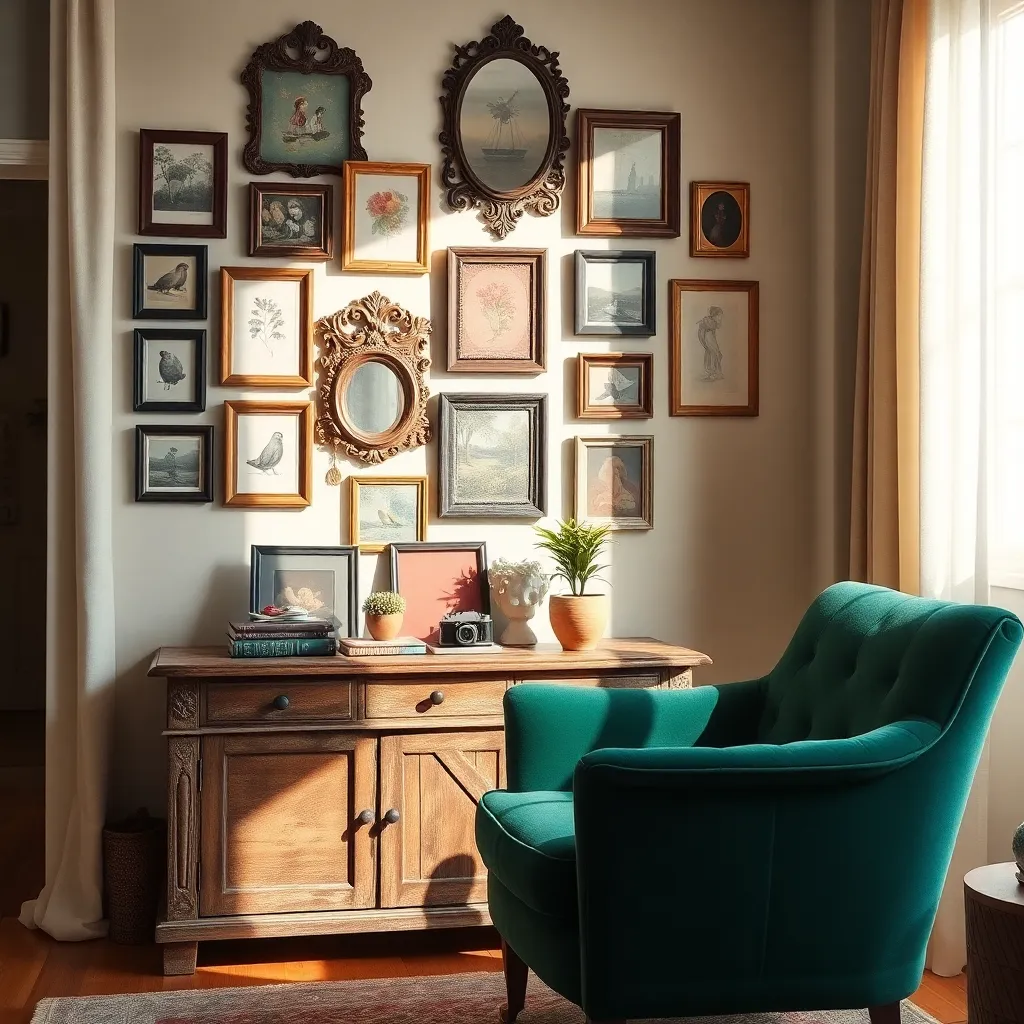
To curate a vintage gallery wall, start by selecting a cohesive theme or color palette that complements your existing decor. This approach ensures a harmonious look, with each piece telling its own story while contributing to the overall aesthetic.
Begin with a mix of art pieces, such as vintage posters, antique photographs, or botanical illustrations. Arrange your collection on the floor first to experiment with different compositions before committing to a placement on the wall.
When hanging your artwork, consider varying the frame styles to add depth and character. Use a combination of ornate gold frames, distressed wood, and sleek black metal to create visual interest and texture.
For a polished look, ensure that the spacing between each piece is consistent, generally around 2 to 3 inches. Use a level and proper hanging tools to maintain alignment and prevent damage to the wall.
Advanced decorators might choose to incorporate small vintage objects, like clocks or mirrors, within the gallery wall. These elements can add dimension and break the monotony of a purely two-dimensional display, enhancing the overall charm of the arrangement.
Blending Vintage with Minimalist Design
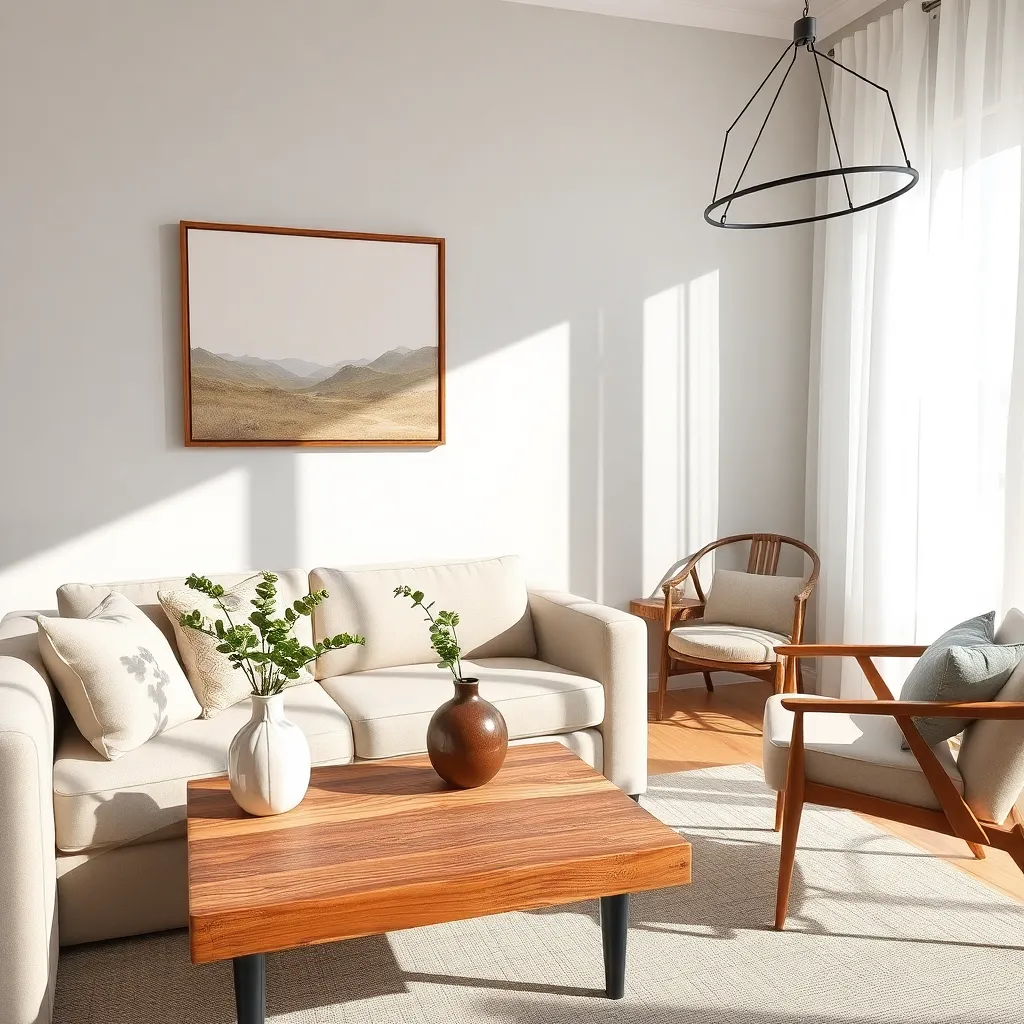
To effectively blend vintage with minimalist design, start by choosing a neutral color palette as your foundation. Soft whites, muted grays, and earthy tones create a serene backdrop that allows vintage pieces to stand out without overwhelming the space.
Consider incorporating vintage furniture that features clean lines and simple forms to maintain a minimalist aesthetic. Mid-century modern pieces often work well in this context, offering both functionality and timeless style.
When placing vintage items, prioritize balance and harmony in your space. Arrange vintage decor items such as a retro lamp or a classic armchair in strategic locations to serve as focal points without cluttering the room.
For an advanced touch, blend textures by pairing sleek minimalist materials like glass and metal with the warmth of aged wood or patinated brass. This contrast not only adds depth but also highlights the unique character of your vintage finds.
Repurposing Old Items Anew
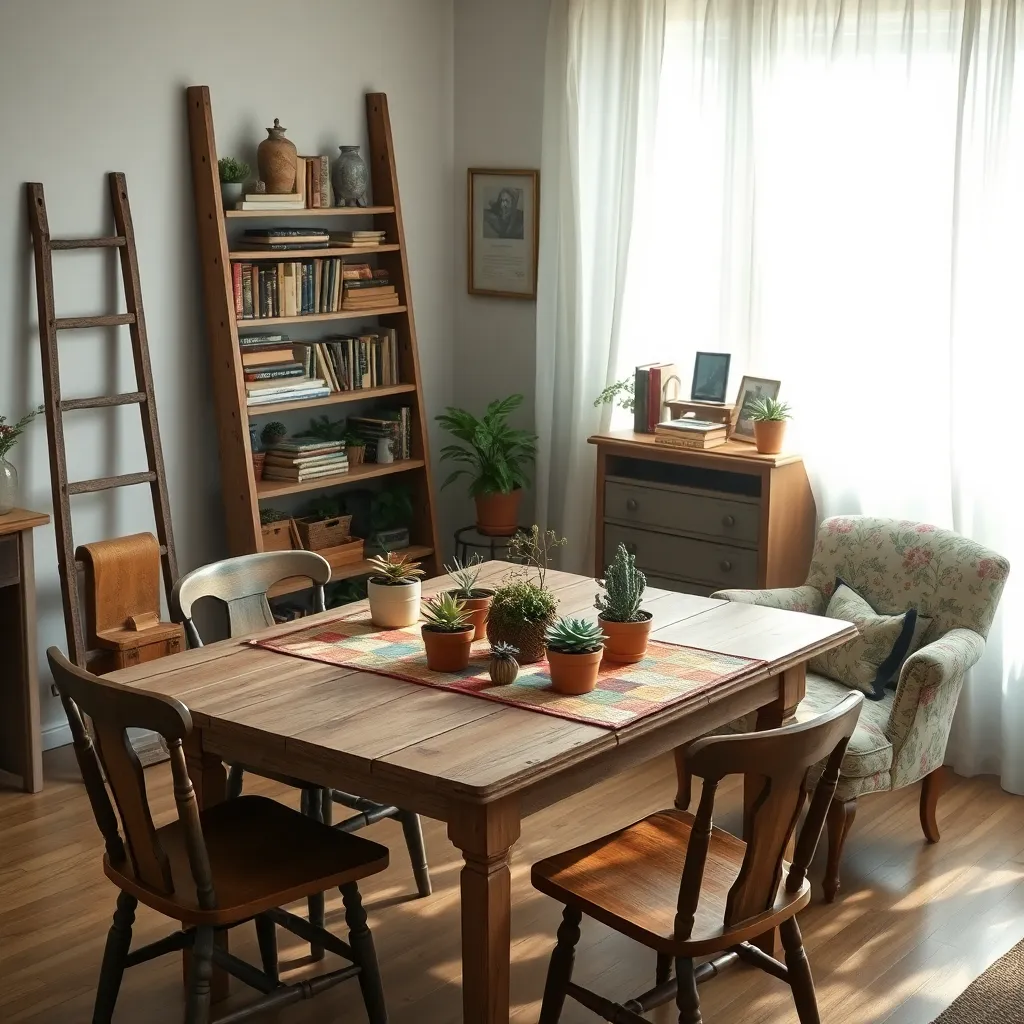
Incorporating vintage items into modern homes can be a rewarding way to add character and history to your space. Repurposing old items not only gives them new life but also creates unique decor that reflects your personal style. For instance, an old ladder can serve as a rustic bookshelf or a towel rack, adding both functionality and charm to your home. To maintain a cohesive look, consider painting it in a color that complements your existing decor, such as a soft white or a bold black.
Old trunks and suitcases make excellent storage solutions while doubling as coffee tables or bedside tables. Choose pieces with interesting textures or patterns to add visual interest, and consider stacking them for a more dramatic effect. If you’re feeling adventurous, line the interior with a vibrant fabric to create a surprising pop of color. This technique not only keeps your home organized but also infuses it with a sense of nostalgia and adventure.
Repurposing doesn’t have to be limited to furniture; smaller items can make a big impact as well. Vintage frames can be transformed into elegant mirrors or unique gallery wall displays. Mix and match different frame styles and finishes for an eclectic yet cohesive look that draws the eye. When arranging them on a wall, start with the largest pieces at the center and work your way outward to create a balanced composition.
For those who love to entertain, consider turning old teacups into charming candle holders for your dining table. Simply fill them with wax and a wick, and you’ll have a delightful centerpiece that guests will admire. Pair these with a soft table runner in a complementary color to enhance the vintage vibe and create a warm, inviting atmosphere. This approach not only adds a touch of elegance to your home but also showcases your creativity and resourcefulness.
Integrating Classic Patterns and Textiles
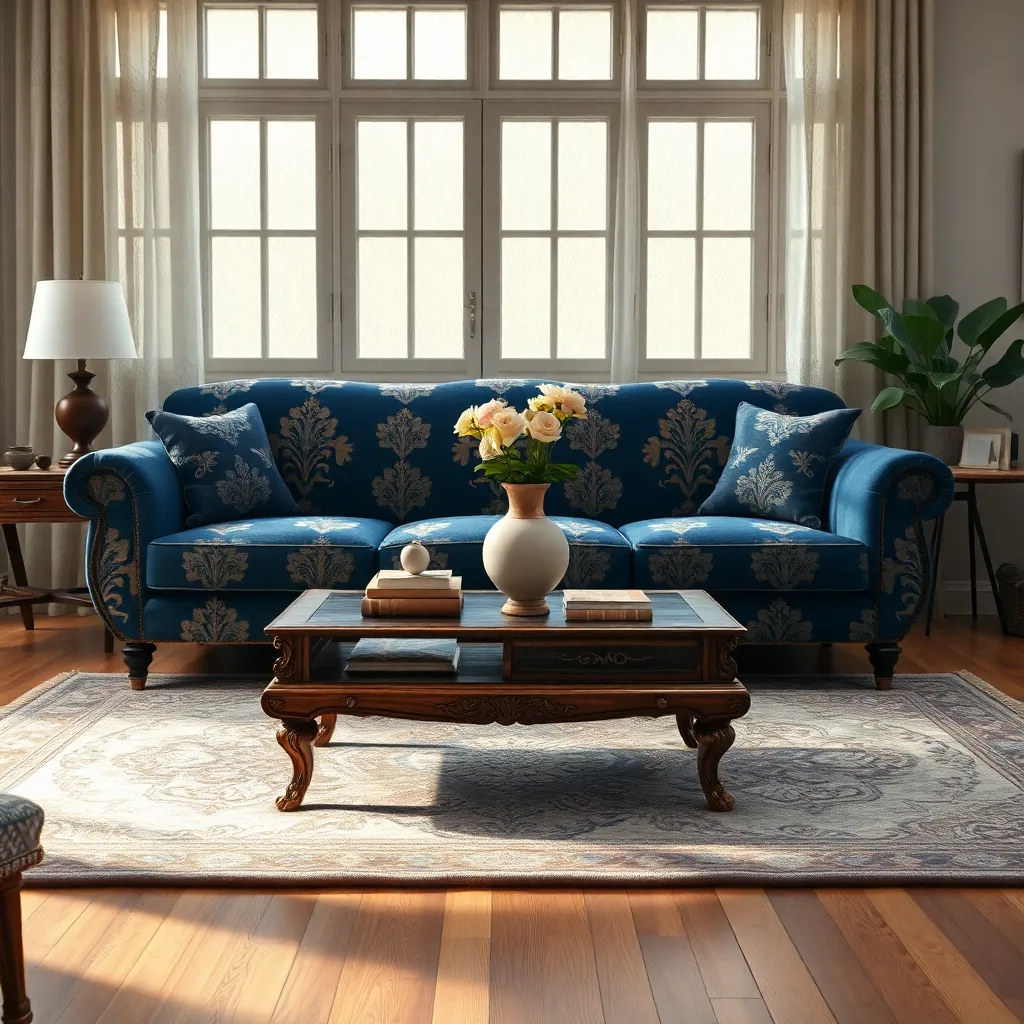
Classic patterns and textiles have a timeless appeal that can instantly elevate your home’s aesthetic. To incorporate these elements, begin by selecting a focal piece, such as a sofa or an armchair, upholstered in a pattern like houndstooth or toile.
Mixing different patterns requires a careful balance to avoid a chaotic look. Start by choosing a dominant pattern, then add one or two complementary patterns of varying scales for a cohesive feel.
When selecting textiles, consider materials like velvet, silk, or linen to bring a touch of elegance to your decor. For a more advanced approach, layer different textures by mixing smooth fabrics with nubby or woven materials, creating depth and interest in your space.
Color pairing plays a crucial role in integrating classic patterns with modern decor. Opt for a neutral base and add pops of color through patterned pillows or a vintage-inspired rug to create a harmonious blend.
Creating Cozy Vintage-Inspired Nooks
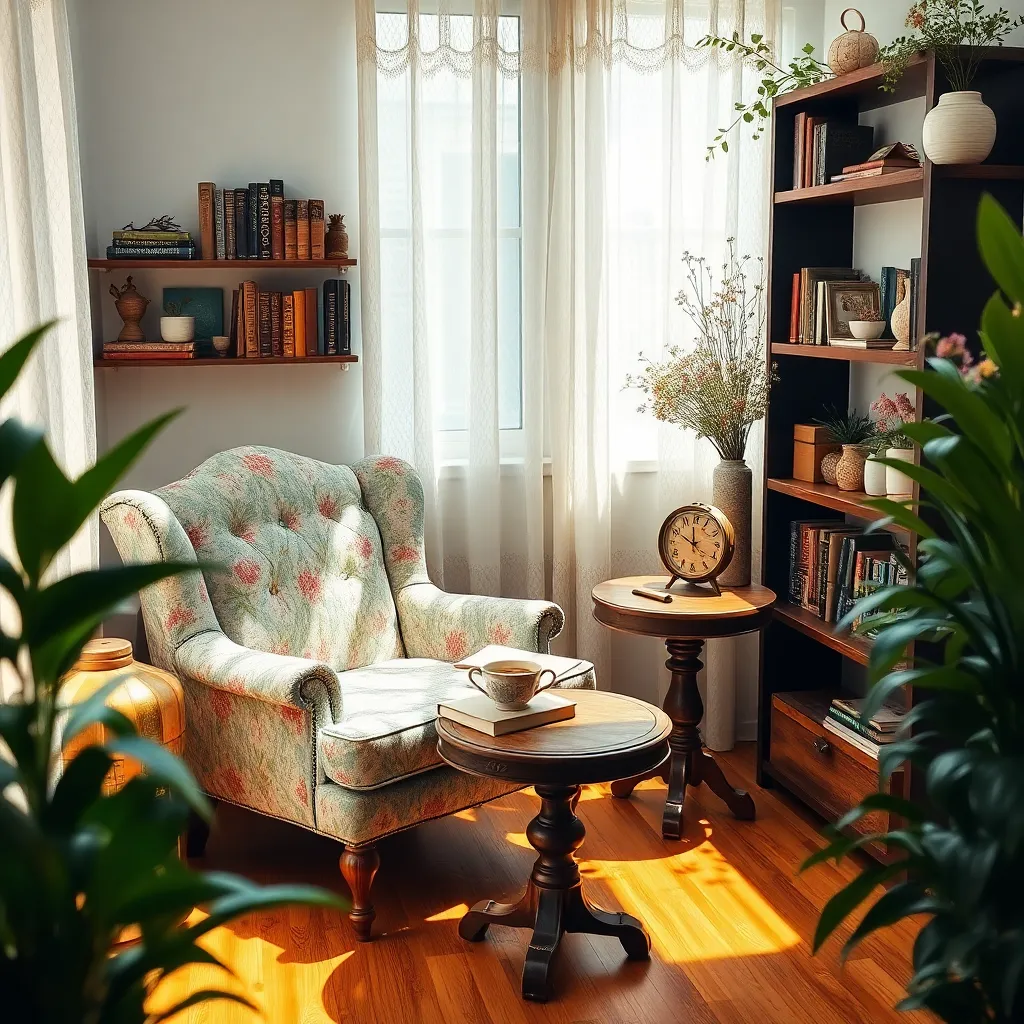
To create cozy vintage-inspired nooks, start by selecting a comfortable seating option such as a plush armchair or a chaise lounge. Choose pieces with timeless fabrics like velvet or linen in muted colors to evoke a sense of warmth and nostalgia.
Next, consider incorporating a small side table to hold a vintage lamp or a stack of classic novels. Opt for materials like wood or wrought iron to maintain an authentic vintage feel.
Layering is key to achieving coziness, so add textured throw blankets and cushions in floral or paisley prints. These elements not only provide comfort but also introduce classic patterns that complement the vintage aesthetic.
For an advanced touch, incorporate an antique rug with intricate designs to anchor the space visually. This will add a layer of sophistication and pull together the overall look, making the nook an inviting retreat.
Conclusion: Growing Success with These Plants
In “12 Creative Vintage Decor For Modern Homes,” we explored how embracing the charm of vintage decor can enhance the warmth and intimacy of modern living spaces. From incorporating timeless furniture pieces, like distressed wood tables and velvet armchairs, to adding character with retro lighting and antique mirrors, each concept highlights how these elements can foster a nurturing environment. We also delved into using vintage textiles for a cozy touch, integrating classic art for inspiration, and utilizing heirloom china for memorable dining experiences.
Now, it’s time to take action. Begin by selecting one vintage element you feel most drawn to and incorporate it into your home this week. Notice how even a single change can transform the ambiance and foster deeper connections with loved ones.
Don’t forget to bookmark this article—having these ideas at your fingertips will serve as a valuable resource as you continue to cultivate a home that nurtures and supports your relationships. As you embrace this blend of old and new, remember that the effort you put into your environment reflects the care and attention you invest in your relationships. Here’s to creating a space that not only looks beautiful but enriches your connections for years to come.
